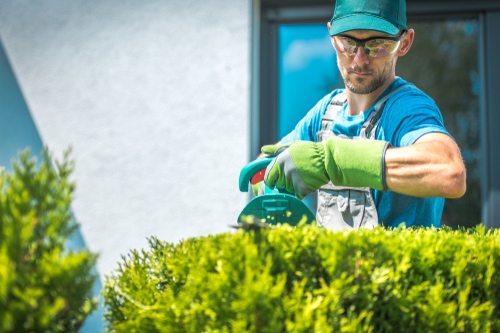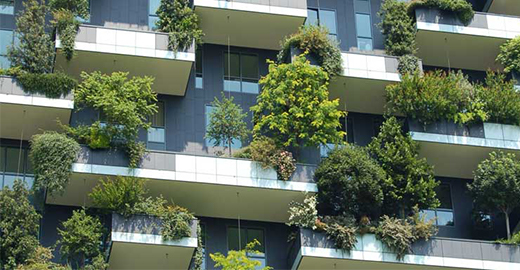Thanking Barry for the continual gardening service you provide us at our Hunters Hill Home. Love your work.


A Better Price offers full gardening and maintenance services for residential and commercial properties in Darlinghurst area. We pride ourselves on our attention to detail in our work, ensuring all areas are presented to a top-level and high quality. When you walk into your garden after we visit, it will be like walking into a freshly cleaned house. Everything will be neat, clean, and tidy, you will feel good just being in the space. With old-fashioned service at the fore, we are passionate about reliability and aim to exceed our clients’ expectations every time.
A tailored garden services program can be implemented providing individual maintenance and horticultural consultation to ensure the ongoing care your garden requires. Our gardener Abbotsbury experts optimize their time with detailed weekly and daily visits, to suit all your gardening needs. Setting up a regular detailed system of tasks each week enables the gardening team to efficiently complete each allocated task and insures no appointment is missed.
A Better Price provides expert garden maintenance services, including planting, trimming, hedging, and mulching to help you create an impressive and amazing outdoor space. We also offer garden cleanups and makeovers if you need a little more help to bring your garden to life. We pride ourselves on professional and affordable services that will keep your garden looking its best.

A well-maintained garden that is healthy and thriving, not only provides a beautiful space for you to enjoy with family and friends but will also increase the street overture and value of your property. Whether it be regular garden maintenance or a one-off garden project the expert team at A Better Price is here to help. We take pride in our attention to detail on all jobs, big or small, and guarantee all works will be completed to a high-end finish.
Keeping your garden and lawn looking vibrant, neat, and well maintained is our principal goal. Our affordable prices and outstanding work ethic make us a hard to beat solution for your lawn care. We strive to be meticulous with our work by using meticulous methods.
We offer complete gardening services in Darlinghurst, including free verbal opinions on the best options for achieving your desired requirements and also the health, safety, and longevity of your gardens and trees. The company has specially designed and efficient equipment for the work. You will never be left with branches on your lawn or driveway, and all material removed is composted locally. However, we are also happy to leave you with mulch and/or firewood. Contact us now for any gardener Abbotsbury needs!
Having a beautiful garden is what we all strive for, but the time needed is often hard to find. For busy families, finding the time, let alone the skills, to keep trees and gardens trimmed, and paths clear is next to impossible. Often handyman garden maintenance providers simply offer this service, without the gardening skills or the horticultural qualifications to properly care for your garden. We have the experience and qualifications to ensure your garden remains at its best all year round. With a maintenance program implemented, we can have your garden in order all year round. Our gardener Darlinghurst experts are here to help!
A Better Price offers a fresh new arborist based proactive approach to garden maintenance that sets it apart. With the ability in seeing problems before they get manifest themselves later if appropriate action is not taken. With advice and care, problems of nutrition and disease are taken care of promptly, ensuring that your garden retains its ability, health and beauty.
A Better Price offers a specialised commercial garden, lawn and landscape service for commercial and industrial customers. We are your local Darlinghurst, NSW 2010 based commercial landscaping and commercial garden maintenance experts. There is a range of flexible maintenance options to suit all budgets and sized estates.
Creating beautiful landscapes requires structural and horticultural knowledge that can only be gained through years of training and practice. These are exactly what you can expect from us. Over the years, A Better Price has provided top-notch Darlinghurst landscaping experts and gardener Darlinghurst commercial clients. With the ability to carry out landscaping projects to the highest professional standards, we are the experts in keeping your scenery in exquisite condition. We can work with you on your commercial property outdoor area makeover, from creating a blueprint to deciding what goes where.
If you are a business owner, you would know that your physical office is part of your corporate branding. No one wants to lose the chance to close that million-dollar deal just because of neglected property. Our first-rate gardener Darlinghurst service can help you create a professional image that will make your prospective clients think highly of you.
Our horticultural consultation service is here to help you understand exactly what you’re working with. From plants, turf and trees to soil drainage, pests and bacteria, we’ll give you the foundational knowledge to fix your garden issues and grow from there. We evaluate your garden and factors like light, soil quality, climatic conditions and more. And we’ll provide you with recommendations on which plants will grow best in your garden, while still creating the look you want. We also take into consideration your lifestyle, how much maintenance time you’re able to dedicate and the aesthetic you want to create.
With our team of experienced garden and landscaping professionals, we provide a full range of services to take your garden from tired and crummy to truly blooming. We can help you with garden design ideas and concepts that match your budget and your home design. We’ll then take care of all aspects of your garden makeover professionally.
Our garden construction services include landscaping such as planting, laying new turf, and sourcing new feature trees. We can also build new raised garden beds and planter boxes, as well as retaining walls, decks, and even huts and gazebos. Whatever your garden construction requirements, A Better Price can take care of it all for you, on time and on budget. Call us today for any gardener Darlinghurst needs!
Rather than offer a range of maintenance packages, A Better Price prefers a more personalised approach that is custom-made to suit your needs. Fully qualified, insured and licenced gardener Darlinghurst for every task we complete, A Better Price will give you full peace of mind when you book our services. Be rest assured that all our professional work showcases a clean site on exit from your property hence is inclusive of both green waste removal and blowdown. We quote for the full job or for hourly rates, depending on what the task is as well as what the client prefers. We will happily advise you and provide a no-obligation quote on all our services.
A Better Price understands the value of a good looking property and hence we offer a quick, reliable and highly professional service to meet the distinct requirements of our customers. We have an advanced range of mowing equipment designed for the maintenance of lawns in residential and commercial property. Our team of gardeners Darlinghurst are properly trained to ensure that you have a neat and beautiful lawn once our work is completed.
We’re here to make planning and caring for your garden easy with our full range of garden services. We can design the ideal landscaping and plant selections for your space and lifestyle. We can take care of your garden on a regular basis. No matter your needs, A Better Price is here to get your outdoor space looking lovely and keep it that way.



Why People Choose Us
Gardening & Landscaping Services in Darlinghurst, Quality Garden Care.
When it Comes to Gardens and Landscaping we provide A Better Price hands down.
Darlinghurst is an inner-city, eastern suburb of Sydney, New South Wales, Australia. Darlinghurst is located rapidly east of the Sydney central event district (CBD) and Hyde Park, within the local government area of the City of Sydney.
Darlinghurst is a densely populated suburb once the majority of residents animated in apartments or terraced houses. Once a slum and red-light district, Darlinghurst has undergone urban renewal past the 1980s to become a cosmopolitan area made stirring of precincts. Places such as Victoria Street (which connects Darlinghurst to Potts Point in the north), Stanley Street (Little Italy) and Crown Street (Vintage and Retro Fashion) are known as culturally wealthy destinations. These tall street areas are connected by a network of lane-ways and street corners behind shops, cafes and bars.
Demographically, Darlinghurst is home to the highest percentage of generation X and Y in Australia. The majority of businesses in Darlinghurst are independently owned and operated small businesses with on zenith of 50% of all commercial commotion in the area being consumer oriented: indie retail, food, drink, dining, leisure and personal services. Darlinghurst is also home to large number of off-street creative industries.
Darlinghurst’s main street is Oxford Street. This major Sydney road runs east from the south-eastern corner of Hyde Park through Darlinghurst and Paddington and terminates at Bondi Junction. Oxford Street is one of Sydney’s most famous shopping and dining strips. The Darlinghurst decline is Famous around the world as the centre of Sydney’s cheerful community, is the yearly parade route of the Sydney Mardi Gras and the spiritual birthplace of the LGBT rights movement. It is home to a number of prominent cheerful venues and businesses, while more broadly Darlinghurst is a centre of Sydney’s burgeoning little bar scene.
From the 1990s onwards Oxford Street began to garner a reputation for physical Sydney’s primary “nightclub strip”, popular later than both cheerful and straight clubbers, surpassing the notorious red-light district of Kings Cross in popularity. As a upshot of the influx of revellers, crime rates reportedly increased in the Place around 2007, particularly for assaults and robberies. This reported increase should be understood in terms of a enormously low background crime rate in East Sydney in general.
There are a number of named localities in and roughly Darlinghurst including Taylor Square, Three Saints Square, Kings Cross and confusingly furthermore East Sydney. Locals have used this pronounce to tackle to the area immediately with reference to Stanley Street in the suburb’s west, however the title is used more broadly throughout the area from Woolloomooloo up to Taylor Square where the dated Darlinghurst Gaol still has the words East Sydney in brass lettering above the main entrance. This is because from 1900 to 1969 the entire Place to the east of Sydney’s CBD, from the harbour to Redfern, was an electorate known as the Division of East Sydney.
Already in 1820 every ridge line admin from Potts Point to Surry Hills was known as Eastern Hill.
Darlinghurst shares a postcode (2010) and an extensive soft southern attach with neighbouring suburb Surry Hills which, with Paddington to the east and Woolloomooloo, Rushcutters Bay and Potts Point to the north, comprise the metropolitan region of East Sydney. Although and no-one else minutes saunter away from the Sydney CBD, this region is geographically certain from it; separated from the more with ease known commercial middle by several landmarks: Central railway station, Hyde Park, St Mary’s Cathedral and The Domain.
East Sydney hosts some Famous restaurants.
Sydney’s Eastern Suburbs cover anything the house from the east of Darlinghurst occurring to the Pacific Ocean.

Yes, we do and how do I get one you may ask?! Well, it’s as easy as picking up the phone and ringing our number. You’ll be put in touch with our friendly team who’ll organise an appointment for one of our team members to evaluate the job and give you a free quote!
We provide a comprehensive aftercare service for new landscape gardens designed and built by us. We pride ourselves on how we continue to look after our clients and their gardens once the build stage is completed. We can also give you detailed garden maintenance notes for all your plants, email you monthly tailored advice or organise the maintenance by one of our dedicated gardeners on your behalf. We usually meet clients once or twice a year to talk about further improvements
Creating a well-designed garden or landscape requires detailed knowledge and experience that goes beyond horticulture and hard landscaping. Bringing all of these elements together in an artistic and cohesive manner to deliver enduring end-results, that’s also within your budget, requires precise planning and managing. A good garden designer will make this process as simple as possible for you.
Yes, we do! Once we’re done mowing the lawns, trimming the hedges and pruning the trees, we will then clear out all the rubbish generated. We can also offer services to pick up other kinds of household rubbish that you have lying around.

Thanking Barry for the continual gardening service you provide us at our Hunters Hill Home. Love your work.

Shall recommend for everyone for Gardening and Landscaping Services.
We are currently looking for a local Gardener in Darlinghurst who has experience in Residential and Commercial Gardening, Garden Makeover and Maintenance, and other Garden Services, who is also available for immediate 24 hour roster work, and can attend to jobs on the same day. Must be ready to go through COVID-19 compliance. If you wish to apply for this position. Please apply through our email here.
You may call any contact number, ask for Barry!